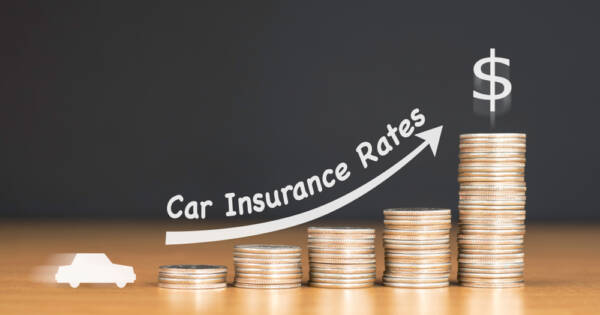Car insurance is something that every motorist needs. However, the cost of renewing car insurance is not something anyone looks forward to. Shopping around can help seniors, especially those who are careful drivers, save a lot of money on their car insurance. If you’re ready to renew your insurance policy and want to make sure you’re getting the best deal, it’s crucial to understand some key strategies for success.
1. Shop Around
Many policyholders simply let their car insurance renew automatically from year to year. They assume that any “no claims discount” they have earned will be enough to save them money. This is often not the case, however.
Insurance providers often offer discounts to attract new customers. These discounts can be significant. Shopping around and getting quotes from several providers, even if you’ve been a loyal customer to the same insurer for years, could save you hundreds of dollars per year.
2. Consider the Type of Car You Drive
Insurance companies base their premiums on risk data. The type of car you drive can make a big difference in how much you pay. Powerful cars or ones that are more likely to be stolen are likely going to cost more to insure than more mundane makes and models.
If you’re in the market for a new vehicle, check how much it will cost to insure it before you make the purchase. Be aware that aftermarket modifications can also make a difference to your annual premiums. Some examples of cars that are popular but still relatively cheap to insure include the Honda CR-V, Ford Escape, and Ford F-150.
3. Participate in Extra Driver Training
Younger drivers are often encouraged to take a DMV-approved defensive driver course as a way of reducing their premiums. These courses not only cut the cost of car insurance but also make people safer drivers. Drivers’ education teaches people how to spot hazards before they become a problem and respond to dangerous situations as they develop. Plus, advanced driving classes often teach things such as how to handle skids, how to drive in poor weather, and how to parallel park correctly.
Older drivers can also benefit from a defensive driving course. Not all insurance providers recognize all courses, though. So shop around for an insurance provider that offers a discount if you take a refresher course.
4. Raise Your Deductible to Cut Your Premium
The deductible is the amount of money you’ll have to pay out before the insurance provider covers the rest of a claim. Increasing the deductible could reduce the amount you pay on your insurance each year.
It can be tempting to increase your deductible to a very high level. However, it’s important to remember that if you’re in an accident and the damage you have to pay for is the same or less than the deductible, you’ll need to pay for that repair yourself. So, make sure you have enough in your emergency fund to cover the cost of the deductible.
5. Invest In Security Devices
Dashcams, immobilizers, alarms, and trackers can all serve as deterrents for thieves. Dashcams are particularly useful because you can review the footage in the event of an accident or if your car is damaged in some other way.
Many insurance providers offer discounts to people who have one or more security devices fitted. How much of a difference these devices will make can depend on where you live (and where you usually park your car). Someone who lives in a high-crime area may find they save more than someone in an area that’s statistically regarded as being safer. Contact your insurance provider to see which devices they might offer discounts for.
6. Examine Your Mileage
If you don’t use your car a lot, consider looking for an insurance provider that charges per mile rather than a flat fee for your insurance. This could save you a great deal of money over the course of a year.
If you have a long commute and put thousands of miles on your car every year, however, you may end up being charged more for your insurance simply because you’re on the road so much. Experiment with different mileage levels to see if switching to mass transit could save you money in the long run.
7. Think About the Type of Cover You Really Need
It’s important to have liability insurance. In fact, you’re legally required to have it in almost every jurisdiction. If you’re involved in an accident and need to pay for repairs or cover someone’s medical bills, you could end up having to pay significantly out of pocket without liability insurance.
However, insurance for theft or damage to your own vehicle is not always necessary. It could even be a waste of money if your car is older and not worth much. For more expensive cars, the extra cover for theft or damage becomes worthwhile.
8. Check Your Credit Score
Seniors with a healthy credit score are more likely to get good rates on their car insurance. Check your credit to make sure there are no errors or issues with it. If you see something on your credit file that looks incorrect, get it fixed before applying for a new policy. Make sure you’re doing everything you can to keep your credit score as high as possible.
To increase your credit score, pay your bills on time. If you’re carrying significant debt on credit cards, try to reduce that debt so your overall utilization is lower, which can raise your credit score.
9. Pay Yearly Rather Than Monthly
Paying a monthly fee for your car insurance can seem like an attractive way to spread the cost. However, you’re essentially taking out a loan and paying it back, with interest. If you have the money to pay for your insurance in full, opting to do so could save you money.
If you don’t have the cash on hand, a 0% credit card could be worthwhile as long as you clear the balance before you’re charged interest. Another idea is to put aside some money each month into a savings account that’s just for insurance premium payments. Deposit enough this year that you can pay next year’s premium upfront at renewal time, and then continue to do that each year.
Paying for the year doesn’t lock you in, either. You can still cancel at any time and receive a refund for the unused months of your payment.
10. Consider a Black Box
Black box trackers monitor your driving habits and adjust your insurance based on the information they collect. Not all insurance providers offer a black box policy, though, and they don’t suit all motorists. Black boxes usually expect you to drive only during the day and on normal roads.
If you live in a rural area or drive late at night, the black box could penalize you for those things. However, if your driving is mostly from your home into the city or your place of work and you’re a generally safe driver, you could see a reduction in your premiums for agreeing to have a black box fitted.
In modern times, some insurance companies use a tracking app that does the same thing. You leave the app open while driving and it measures your average speed, miles driven, and a score of other things. Safe drivers will then pay less.
11. Add Another Driver
Adding another named driver to your policy could reduce the amount you pay. This is particularly true if the named driver is experienced or if they’re a student who qualifies for a reduction in their premium because they’re getting good grades.
Note that it’s important for the main driver to be the person who drives the car the majority of the time. If you’re an older driver who has been in an accident and you’ve lost your no claims discount, it may be tempting to name someone else as the main driver on your car, but doing so would be fraudulent.
12. Look for Other Discounts
There are many discount options for seniors. For example, you could save money if you have your car insurance with the same company as your home insurance. This is called bundling, and many insurance companies offer it. Another option is to look for senior-specific insurance providers or insurance companies that offer discounts for members of the AARP or other organizations.
Another common way seniors can save money on their auto insurance is by using a good driver discount, which numerous providers offer. If you’ve been driving a long time and had few accidents, you could be eligible. However, you might not be offered it unless you specifically ask for it.







